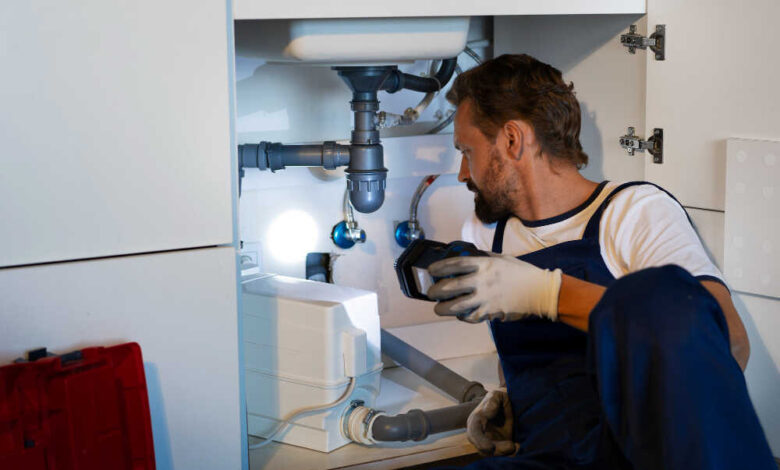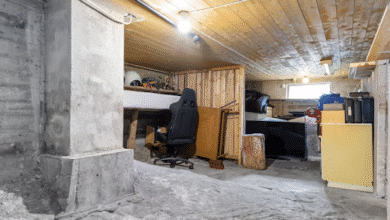How to Protect Your Pipes During the Winter Months

Winter is tough on many things, but one area that often gets overlooked is your plumbing system. When the temperature drops, your pipes are at risk of freezing, which can lead to costly damage. But don’t worry—there are plenty of things you can protect your pipes in this winter.
Why Do Pipes Freeze?
Before we get into the “how,” let’s briefly look at the “why.” When the temperature outside drops below freezing, any water sitting in your pipes can freeze. Water expands when it freezes, which puts pressure on the pipes – sometimes enough to cause them to crack or burst. The result? Potential flooding and some expensive repair bills. But with the right preventative measures, you can avoid these headaches. It’s also a good idea to get in touch with a reputable Dallas plumber ahead of the winter period who’ll be able to look at your plumbing system and make recommendations to ensure everything runs smoothly during the cold months.
Insulate Your Pipes
One of the simplest and most effective ways to protect your pipes from freezing is by insulating them. But not all pipes are created equal, so pay attention to the ones most at risk.
Focus on these pipes:
- Pipes in unheated areas – Attics, basements, crawl spaces, and garages are typically colder than the rest of your house.
- Outdoor pipes – Garden hoses, spigots, and sprinkler systems are very vulnerable to freezing.
- Pipes running along exterior walls – Even if they’re inside your home, pipes near poorly insulated walls can freeze quickly.
You can find pipe insulation materials at any hardware store, and it’s easy to install yourself. Just make sure to measure your pipes so you get the correct size.
Keep Your Home Warm
This might seem obvious, but maintaining a warm indoor temperature is one of the best things you can do for your pipes. Here are a few tips to keep your home warm and your pipes safe:
- Set your thermostat – Keep it at a consistent temperature, both day and night. It’s tempting to turn down the heat at night, but that drop could be all it takes for your pipes to freeze.
- Open cabinet doors – Especially in your kitchen and bathroom, leaving the cabinet doors open allows warm air to circulate the plumbing. It might seem small, but it can make a big difference.
- Use space heaters – If you have any particularly cold rooms, consider using a space heater to provide extra warmth in that area. Just be sure to follow safety guidelines.
Let Your Faucets Drip
You might’ve heard this one before, and it’s true. Letting your faucets drip—especially those connected to exposed pipes—can relieve the pressure that builds up when water freezes. Even a small trickle of water is enough to prevent ice from forming and bursting your pipes. While it might not prevent freezing entirely, it could stop the pipes from reaching that critical pressure point where they crack.
Disconnect and Drain Outdoor Hoses
It’s a simple step that many homeowners overlook—disconnect your garden hoses before the first freeze. If you leave hoses connected to outdoor spigots, any water left in the hose or faucet can freeze, expand, and eventually damage the faucet or pipe.
After you disconnect the hose, drain it and store it for the winter. For extra protection, you can also install a frost-free hose bib, which is specifically designed to withstand freezing temperatures.
Seal Any Gaps or Cracks
Take a walk around your home and look for any gaps or cracks in the walls, floors, or foundation. These are often found around pipes entering your home. Cold air can sneak in through these openings and chill your pipes, so it’s essential to seal them up.
Use caulk or spray foam insulation to fill in these gaps. This helps keep the cold air out and the warm air in, providing better protection for your pipes and increasing your home’s overall energy efficiency.
Keep Garage Doors Closed
If you have water supply lines running through your garage, make sure to keep the garage doors closed as much as possible during the winter. Keeping the cold air out of your garage can help maintain a warmer environment and protect those pipes from freezing.
Know Where Your Shut-Off Valve Is
Even with all the preparation in the world, accidents can happen. If a pipe does burst, the quicker you act, the better. Know where your main shut-off valve is located so you can stop the water flow as soon as possible. This step can save you from extensive water damage and make any necessary repairs easier to manage.
If you’re not sure where your shut-off valve is, now is the time to find out. It’s usually in the basement or near the water meter.
Use Heat Tape or Heating Cables
If you live in an area where temperatures consistently drop below freezing, you might want to consider investing in heat tape or heating cables for your pipes. These products work by warming the pipes directly, preventing the water inside from freezing.
They come in two types: manual and automatic. The manual ones need to be plugged in whenever the temperature drops, while the automatic ones kick on when they sense the pipes are getting too cold. Either way, they can be a game changer for pipes in especially cold areas of your home.
Final Thoughts
Winter doesn’t have to mean disaster for your plumbing system. By taking a few simple precautions—like insulating your pipes, keeping your home warm, and letting faucets drip—you can avoid frozen pipes and the costly damage they bring.
Remember, a little preparation now can save you from some major headaches down the road. So, as winter approaches, get your pipes ready and enjoy the season without worrying about unexpected plumbing issues.
We welcome our readers to write for us about home improvement.






